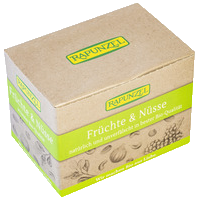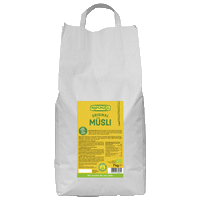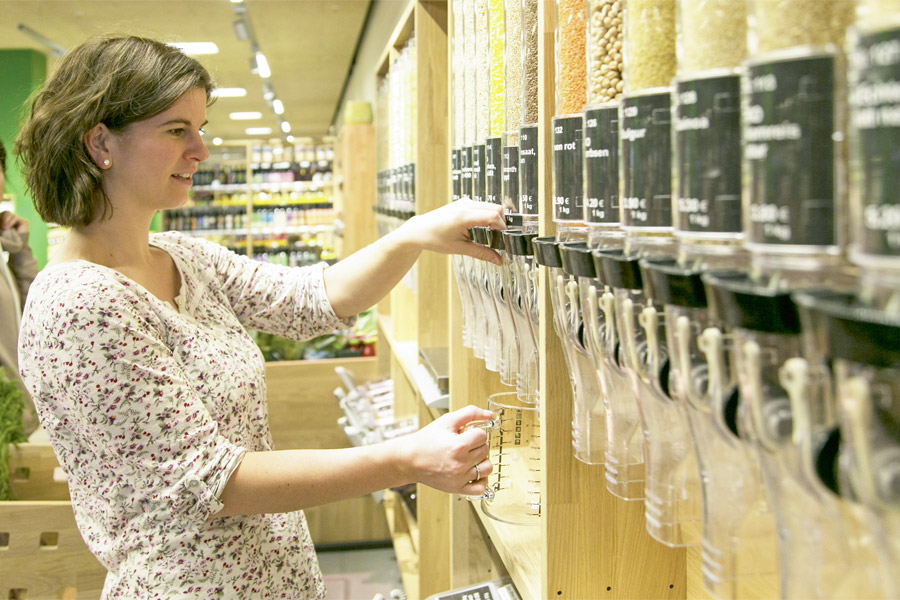These packagings protect our products
As environmentally-friendly and food-safe as possible
Rapunzel has been working intensively for a long period of time to make packagings more sustainable. Colleagues from different disciplines and packaging manufacturers continuously test and develop new, environmentally-friendly packaging materials.
Some successful solutions are visible at first sight (e.g. conversion of our rice products to paper packagings and our unpackaged portfolio), others only at second glance (e.g. use of thinner plastic foils, use of bio films or the conversion to PVC-free lids).
On this page we will give you the background story on the different packaging materials that we use.
Packaging material 2020

How our packagings must perform
Environmental aspects are also important: packagings should be environmentally-friendly, resource-friendly and recyclable and the packaging materials should be readily available.
Learn more about the different packaging materials
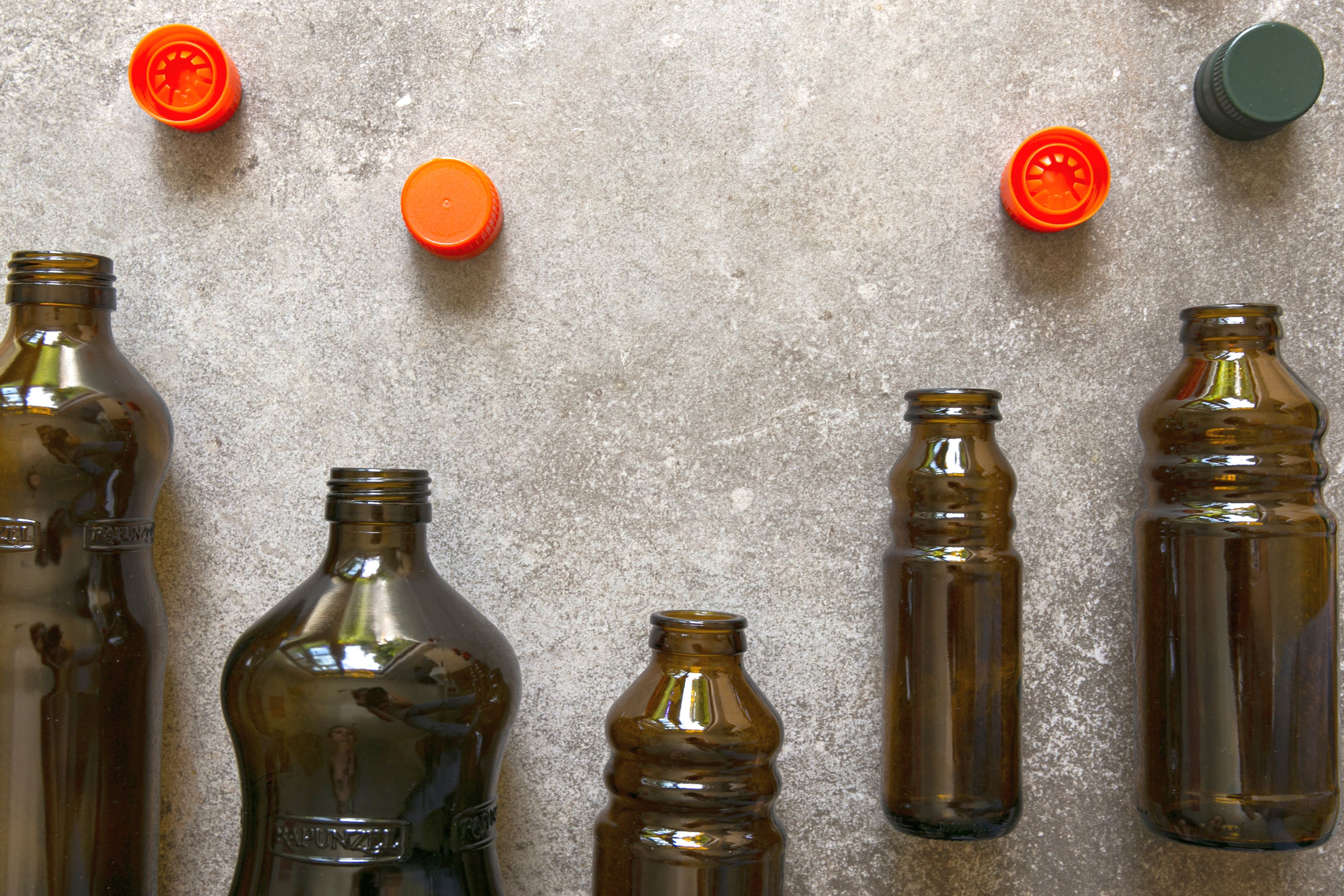
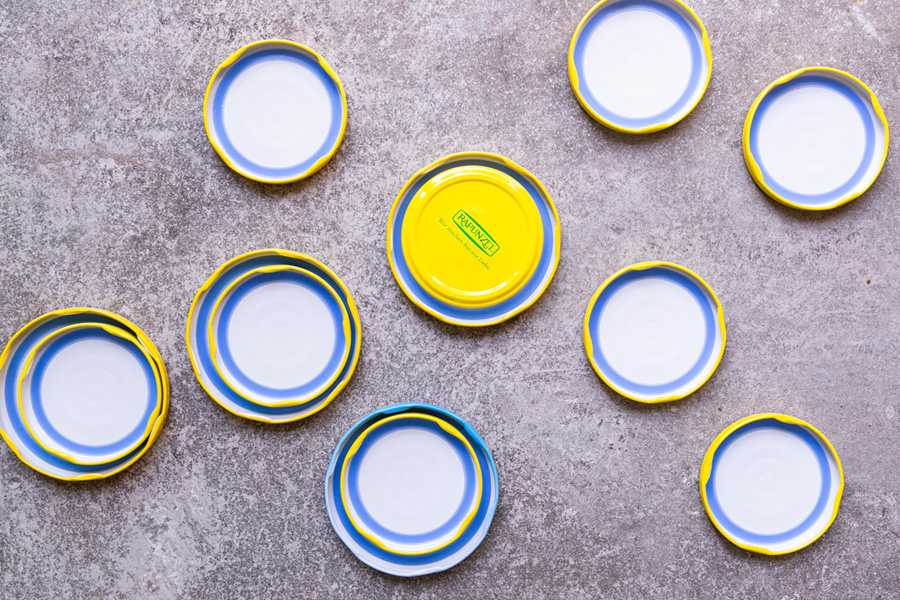
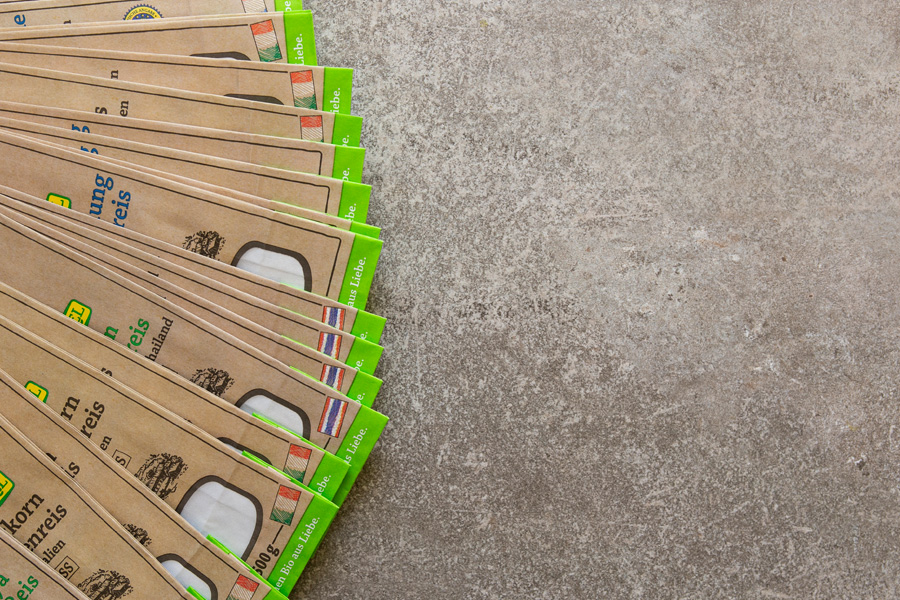
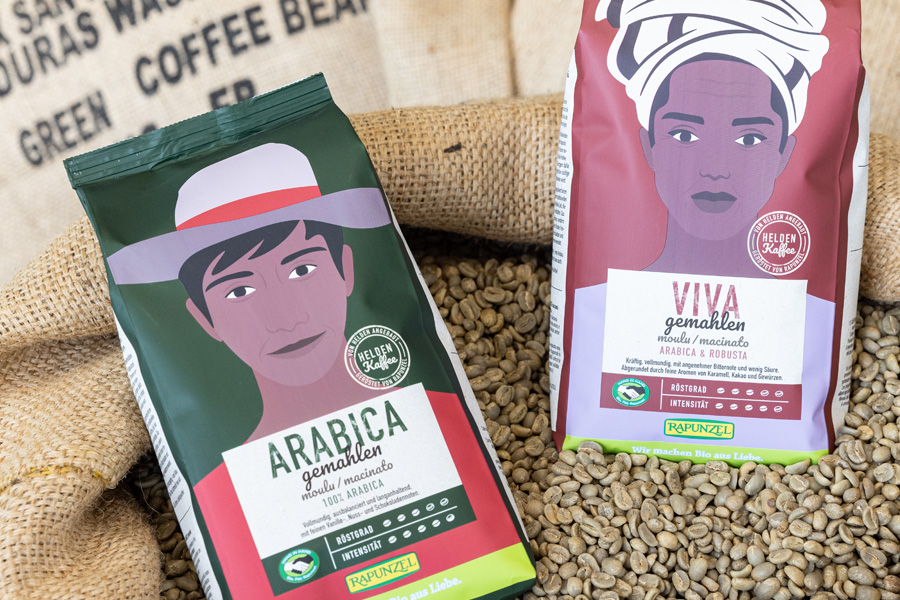
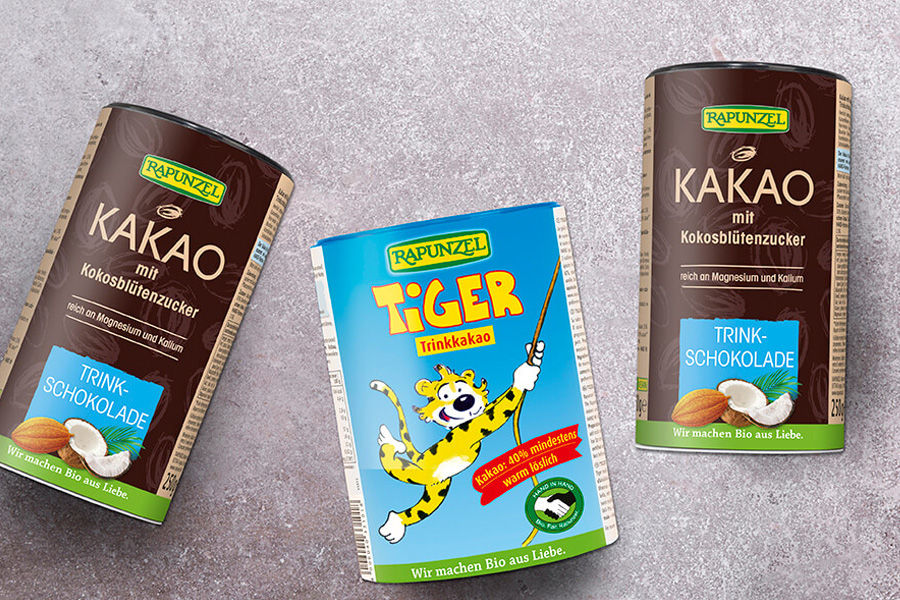
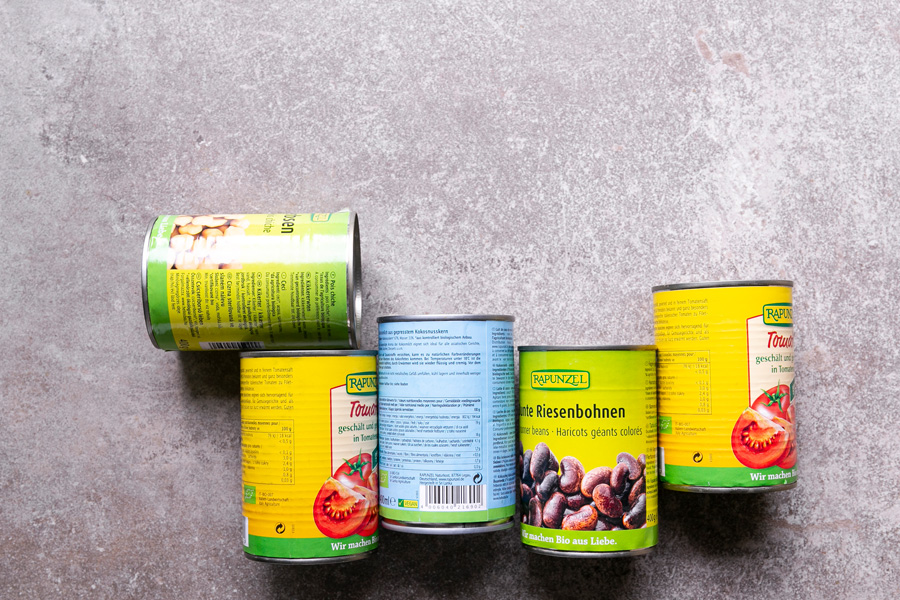
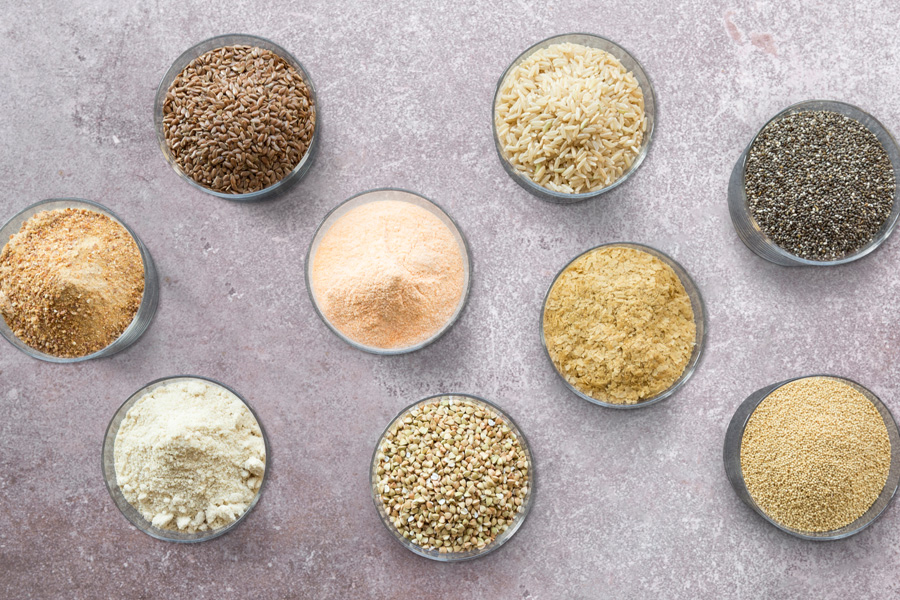
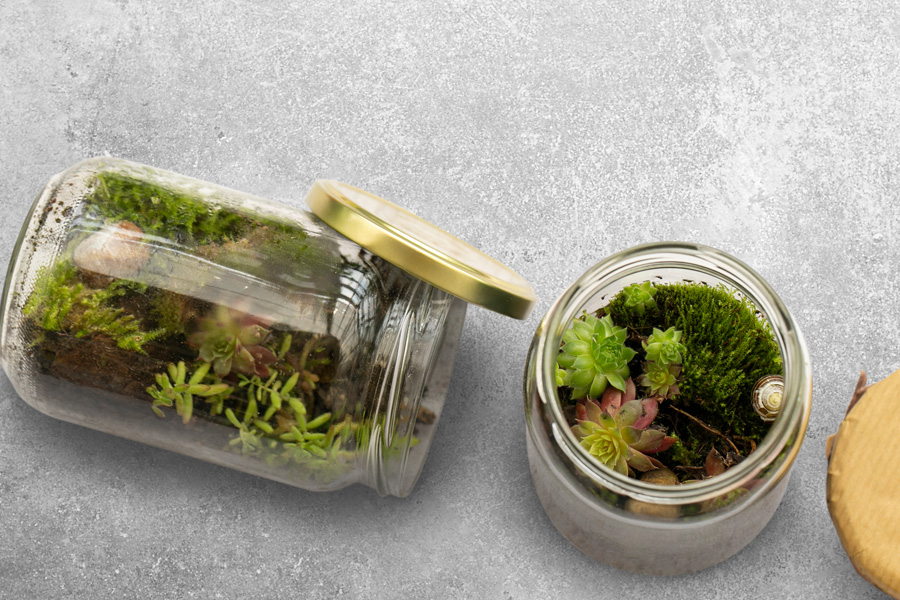
Glass
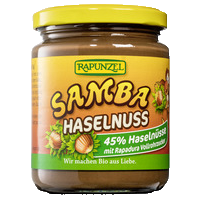
However, the most important raw material for glass packaging is recycled glass, which accounts for an average of 60 per cent of newly produced packaging and up to 90 per cent of green glass. Glass can be melted down and processed into new, high-quality packaging materials an unlimited number of times, with no loss in quality.
Glass can be recovered at a rate of 100 percent. This means: glass recycling forms a closed recovery cycle. By disposing of glass in a recycling container, consumers can make a significant contribution to environmental protection, as waste glass is one of the most important raw materials of new glass used for packaging.
The energy requirements of glass production have continued to fall in recent years. The use of modern, economical melting technologies that reduce the weight of glass packaging along with the input of waste glass in the production of new glass has made a considerable contribution to this.
In addition to ecological criteria, glass is also one of the safest packaging materials, which means there are virtually no interactions between packaging and content.
Frequently asked questions about glass
Which kind of glue is used for the labels? For our nut butter glasses that are labelled with wet glue labels, we use adhesives on a casein basis. Casein adhesives are water-based glues that can be removed without leaving any residues and that prevent damage to filling plants. For other products such as legumes in cans, we use synthetic glues.
Metal lids
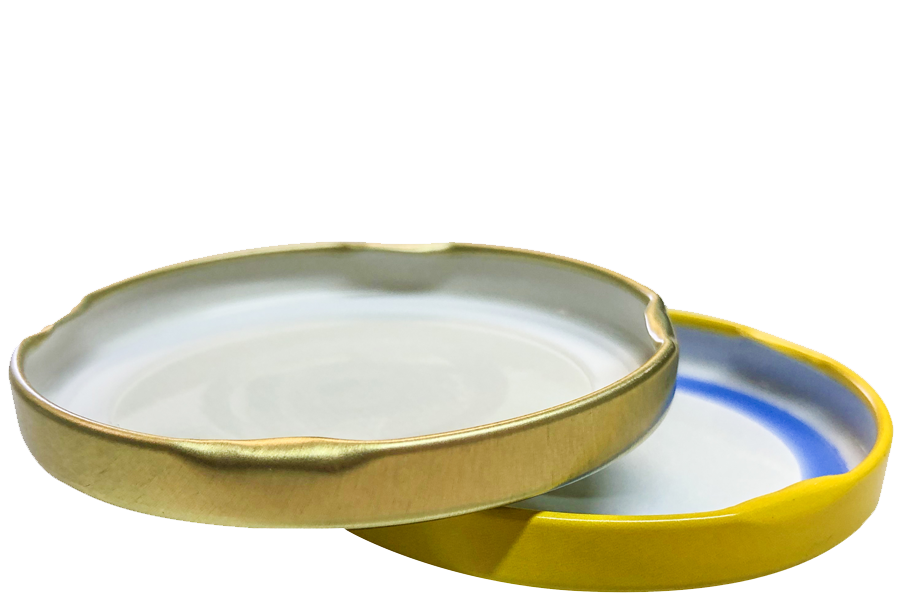
The different components of a lid
Metal lids are a complex packaging system. The lids are made of metal and they have an inner coating. A sealing ring that is also referred to as 'compound' ensures that the lid seals tightly. For pollution-free lids, both the coating and the compound type are important.
PVC-free lids
Rapunzel uses only PVC-free lids for all products that are manufactured and filled at Rapunzel headquarters. Best-known are the lids with blue PVC-free and plasticizer-free sealing rings. Other lid manufacturers use white-colored PVC- and plasticizer-free sealing rings. We guarantee that both the white and the blue sealing rings contain no PVC and no plasticizers.
BPA-free cans and lids
The controversial bisphenol A (BPA) compound was also banned from Rapunzel products. Together with our suppliers we managed to convert all lids for screw-cap glasses to the new BPA-NI (NI = non intend) varnish. The internal coating of this varnish prevents corrosion on the metal surface.
What exactly is BPA?
Bisphenol A (BPA) is a very controversial compound that is often found in the varnish of tinplate packagings such as screw caps and cans. According to the EU regulation for food packagings, BPA is approved if limit values are complied with.
Given our claim to pollutant-free packagings, Rapunzel has banned this controversial compound. Together with our suppliers we managed to convert all our canned products and all lids that are used for screw-cap glasses to the new BPA-NI (NI = non intend) varnish.
Paper
100 % fresh fiber paper
Paper is made from renewable raw materials and can be easily recycled. This is why Rapunzel packs some of its non-sensitive products, such as rice and pasta, in paper. To be more precise: in 100 per cent tear-resistant virgin fibre paper. It grows back, is biodegradable and not genetically modified.
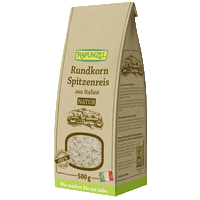
Thanks to the new packaging, we save over 7,000 kg of plastic per year for rice alone. The printing inks used are mineral oil-free. A window made of glassine – also paper – shows at first glance which rice is in the bag. Once the bag has served its purpose, it is disposed of in the waste paper.
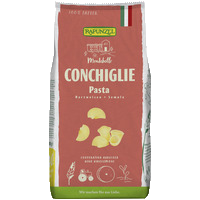
Since February 2022, we have also been offering original Italian pasta in packaging made from 100 per cent paper. Instead of a plastic viewing window, as was the case with the previous plastic packaging, the paper bags of fusilli, penne & co. now feature the respective pasta variety.
Paper with film from renewable resources
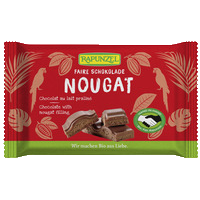
The Italian-made 100 g chocolates in the Rapunzel portfolio are protected by packaging material that consists of very thin paper (only 35 g/ m2) bonded with a metallized bio film. The metallization is vapor-deposited, making this layer 400 times thinner than conventional coatings. Nevertheless, it protects the products just as well.
The bio film is made from 80 % renewable resources (corn starch) and vegetable oil. All the corn that is used for the production of the film is grown in Europe and all materials are guaranteed GMO-free.
Disposal
The novel package material was certified by the TÜV as industrially compostable. In Germany, however, the packagaing cannot be disposed of in the organic waste bin, because the retention time of the organic waste in the composting plants is too short for a complete degradation. In other European countries, however, e.g. in Italy, the packaging material can be discarded in the organic waste. In Germany, the packaging should be disposed of in the yellow pastic refuse bin.
Films
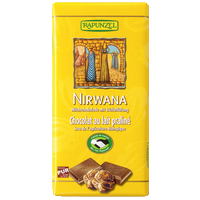
Bio Films
Bio films protect already some Rapunzel products. Rapunzel is constantly testing different biodegradable fims made from renewable raw materials. Several Rapunzel chocolates are already marketed in bio films made from wood fiber and outer paper cases – this way we can save up to 4,620 kg of mineral-oil based plastic film in a year. Whole cane sugar, raw cane sugar and alternative sweeteners are packaged in material that combines bio film and paper. This packaging material saves us about 1,320 kg of plastic film per year.Waste disposal
The cellulose film used in the chocolates is disposed of in home compost or recycled in the yellow bin or yellow bag, but not in the organic waste bin, as the service life in the industrial composting plants is currently still too short. The waste paper bin is also the wrong place to dispose of it – despite the fact that it is made from wood fibre.Film made from renewable resources
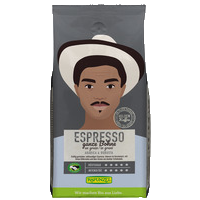
The film that we use to package our hero coffee is made from 49 percent to 67 percent renewable resources. It is produced in a CO2-neutral way.
Sugar cane is the main renewable resource that is used for the production of this bio film. Conventional PET and PE plastic materials are the other ingredients. At this point, we cannot yet entirely dispense with these plastic components, because they form a reliable barrier against humidity and odor, making them important for product and aroma protection. Moreover, bio films cannot yet ensure a sufficient stability nor an adequate sealing of the package.
Plastic Films
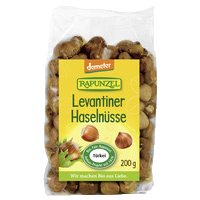
Rapunzel uses plastic materials, such as extra thin plastic foils, very sparingly. The plastic foils that we use consist of PP, PE or PET.
For the packaging of beans, lentils and peas, cereals and oilseeds we invested in a new, state-of-the-art, highly-efficient packaging plant with an optimized plastic bag output. This machine helps to save nearly 20 tons of plastic foil per year.
The packagings for the special nuts as well as the refill bags for the organic mints have been switched to aluminium-free materials and consist of a plastic-paper-composites.
In spite the current criticism of plastic materials, these materials also have many benefits. Plastic foils are machinable, can be adapted to different product sizes, protect the products perfectly against external influences and can be sealed. In addition, food products packaged in plastic can be transported more economically due to their lower weight.
Aluminum
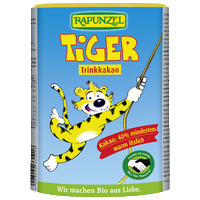
Whenever it is appropriate, Rapunzel will use other packaging materials. Today, we are packaging particularly sensitive walnut kernels and pecan nuts in aluminum-free bags.
Tinplate
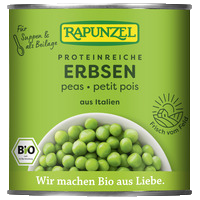
Altstoff Recycling Austria [Waste Material Recycling Austria] (ARA)
Rapunzel's unpackaged portfolio
Favorite products such as Rapunzel Original muesli can be found there too.
